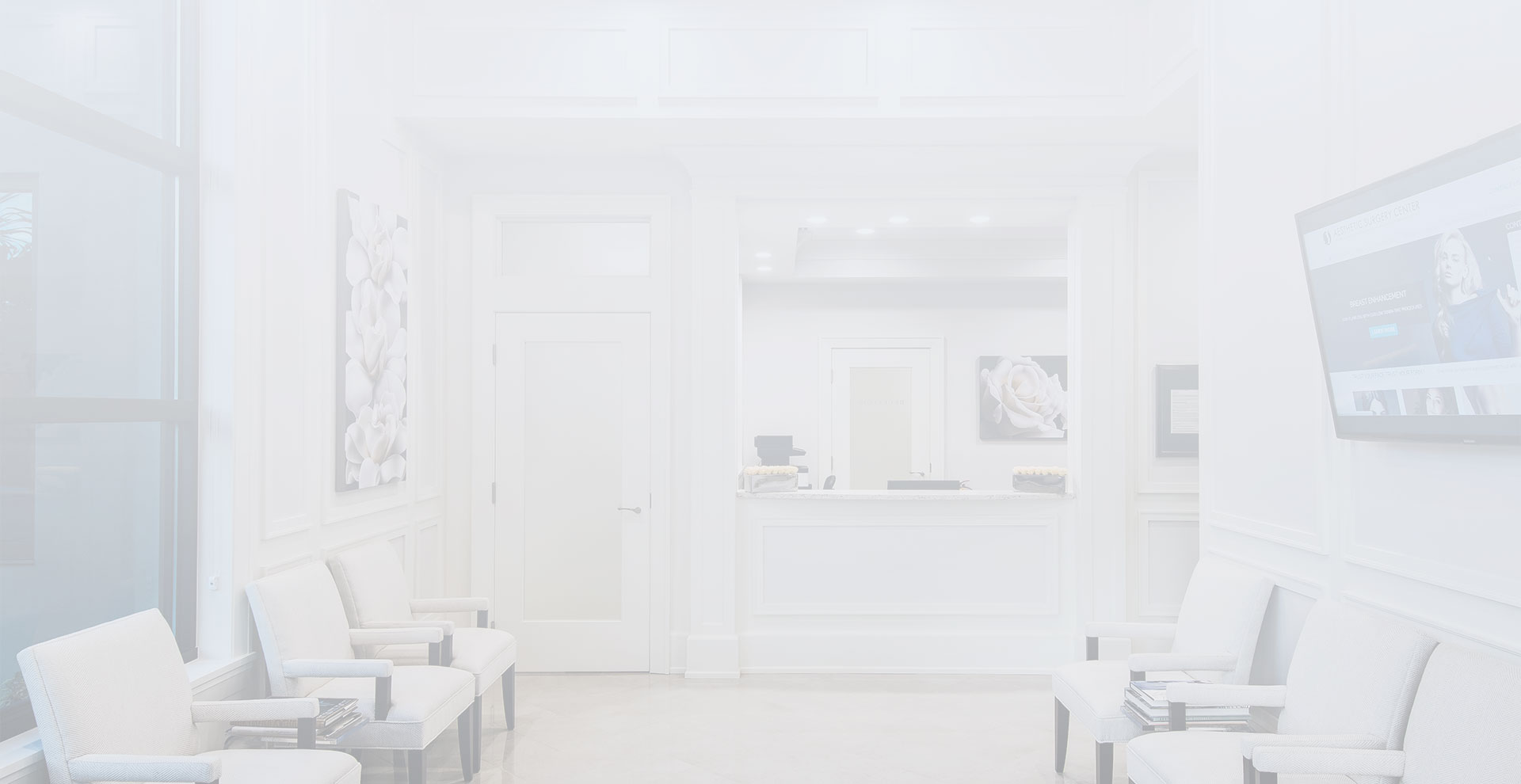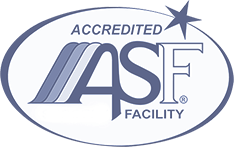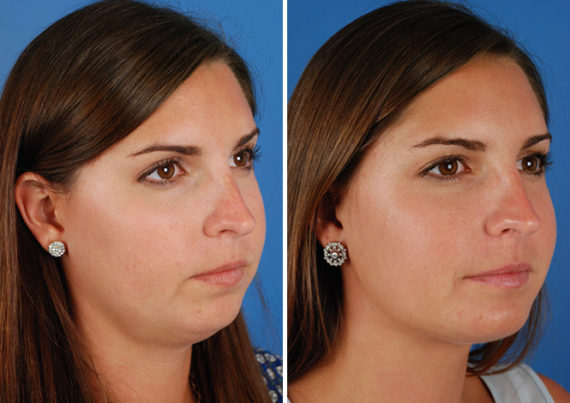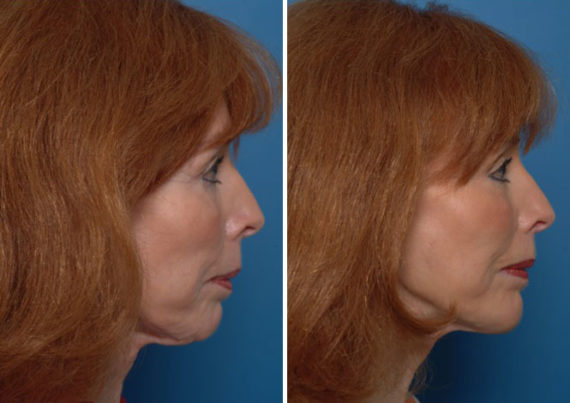Benefits and Beauty Through Chin Augmentation
Chin augmentation is a popular facial procedure that can help achieve a more attractive appearance. It can improve the balance between facial features, create a better profile, and help individuals feel more confident in their looks.
Our Achievements
Chin Augmentation
Chin augmentation is a cosmetic surgery procedure that can help individuals with recessed chins achieve their facial profile goals. During the surgical procedure, one of our board-certified facial plastic surgeons will make a small incision in the chin area and place an implant over the chin bone for a permanent solution. The implants are designed to be stable, durable, and provide natural-looking results. With chin augmentation, patients can enjoy enhanced aesthetic appeal and improved confidence. Chin enhancement is an excellent option for those looking to accomplish their cosmetic goals without any major changes to their face.
This procedure is known for its relatively quick recovery time, and patients can typically resume their regular activities within a short period. Chin augmentation offers a subtle yet impactful transformation, allowing individuals to harmonize their facial features and achieve a more balanced and confident appearance. If you’re considering chin augmentation to enhance your facial profile, consult with a board-certified facial plastic surgeon to discuss your options and ensure the procedure aligns with your cosmetic objectives. Your journey to a more confident and aesthetically pleasing you begins with a consultation.

Chin Augmentation Ideal Candidate – The Consultation

The ideal candidate for chin augmentation may consult with Dr. Agarwal or Dr. Holmes. During the consultation, your surgeon will discuss your medical history and evaluate the soft tissues of your face to determine if you are an ideal candidate for chin augmentation. Moreover, for male patients, chin augmentation for men is increasingly popular, offering a way to enhance a more defined, masculine jawline that aligns with their aesthetic goals.
Your surgeon may also suggest additional procedures such as jawline definition or fat reduction surgery to enhance your youthful appearance. With chin augmentation, patients can enjoy improved harmony between their facial features, enhanced aesthetics, and improved confidence. This is an opportunity for the patient to understand the benefits and risks associated with chin enhancement surgery and to set realistic expectations for the outcome.
Chin Augmentation Preparation
Before undergoing chin augmentation, patients should prepare for the procedure. During their initial consultation, Dr. Agarwal or Dr. Holmes will provide detailed pre- and post-operative instructions that they should follow. Depending on the specifics of the surgery, they may suggest that patients adjust their diet or refrain from taking certain medications. Additionally, individuals must stop smoking at least two weeks prior to their procedure and should arrange for someone to drive them home after the surgery. It is important for patients to follow all pre-operative and post-operative instructions closely to ensure a successful procedure.
CALL TODAY TO SCHEDULE YOUR CONSULTATION
The Chin Augmentation Procedure
Chin augmentation typically involves a detailed and meticulous surgical procedure tailored to enhance facial features. The process begins with a careful assessment of the patient’s facial anatomy to determine the ideal chin size and shape that would best complement their overall facial structure. The goal is to achieve a more assertive jawline, which is often associated with a strong and confident appearance.
The surgery is usually performed with local anesthesia and IV Sedation. A small incision is made underneath the chin. Through this incision, the surgeon carefully positions the silastic chin implant, made of silicone and well-tolerated by the human body. Since the implant is solid, there is no risk of leakage.
The choice of the implant’s size and shape is crucial in chin augmentation. It varies significantly based on the individual’s facial balance and aesthetic goals. The options include:
- Anatomic Implants: Designed to provide a more prominent and elongated chin, enhancing jawline definition.
- Mandibular Prejowl Implants: Designed to increase projection and also fill common prejowl indentations (indentations to each side of the chin on the front view that are between the chin and jowls).
- Square or Angular Implants: Ideal for creating a more chiseled chin profile.
Post-implantation, the surgeon meticulously closes the incision, ensuring minimal downtime and rapid recovery. The entire procedure typically lasts less than one hour, depending on the complexity and the specific techniques used. The result is a more balanced facial appearance, significantly enhancing the patient’s self-esteem and aligning with their aesthetic goals.

Chin Implants Before & After Photos
* Each patient is unique and individual results may vary.
Recovery Time After a Chin Augmentation
The recovery time after a chin augmentation procedure differs from patient to patient, however, most patients can expect to resume light activities within a few days and more strenuous activity after two weeks. After chin implant surgery, patients should avoid extreme movements of the chin area in order to allow proper healing. Patients should also be aware that some soreness and swelling are normal for several weeks following the implant procedure and that their final results will become visible after this period of time.
Achieve a Stronger Jawline with Chin Augmentation for Men
Chin augmentation for men focuses on enhancing the masculine features of the face. Our surgeons use chin implants designed to increase projection and sometimes the width of the chin. This can improve the appearance of your neck on profile, and help balance your facial features. For example, bringing the chin forward can make a seemingly prominent nose appear less prominent. Drs. Agarwal and Holmes carefully analyze their patients’ faces from all angles to determine if a chin implant would be beneficial. This procedure not only improves your physical appearance but also strengthens your self-perception and presence.
Combining Chin Augmentation with Other Facial Procedures
Combining chin augmentation with other facial procedures is particularly beneficial for men seeking a comprehensive enhancement of their facial aesthetics. For male patients, augmenting the chin often goes hand-in-hand with procedures that define the jawline or address issues like excess neck fat or sagging skin and muscle (i.e. UpliftTM lower face and neck lift), creating a more masculine and assertive facial profile. Sometimes rhinoplasty is combined with a chin implant to balance a man’s profile. This integrated approach not only ensures a harmonious facial balance but also addresses common concerns among men, such as achieving a stronger, more defined chin and jawline. By tailoring the combination of procedures to the unique facial anatomy and aesthetic goals of each male patient, surgeons can create a more impactful and satisfying transformation.
Choosing the Right Surgeon for Chin Augmentation in Naples
Selecting the right surgeon for chin augmentation is crucial. Prospective patients should look for a facial plastic surgeon with plenty of experience in cosmetic chin enhancement. Factors like the surgeon’s experience level, past results, and approach to patient care are essential considerations.
Chin Augmentation Price
The cost of chin augmentation can vary depending on the type of procedure and the location. Typically, chin augmentation in Naples, FL, ranges from $6,000 to $9,000. This range includes the surgeon’s fee, anesthesia costs, and implant fees. Patients should also budget for any additional costs that may arise, such as pre-operative tests or post-operative care.
Related Procedures: Rhinoplasty, Revision Rhinoplasty, The UpLift Facelift, Endoscopic Mid Facelift Surgery, Eyelid Surgery, Skin Cancer Reconstruction, Hair Transplant Surgery, Surgery of the Ears, Fat Transfer (Fat Grafting), Lip Augmentation, Endoscopic Eyebrow Lift, Scar Revision
Why choose Aesthetic Surgery Center
Dr. Anurag Agarwal, M.D., F.A.C.S.
- Double board-certified facial plastic surgeon by the American Board of Facial Plastic and Reconstructive Surgery and the American Board of Otolaryngology – Head and Neck Surgery.
- Oral examiner and Board of Directors for the American Board of Facial Plastic and Reconstructive Surgery
- Former President of the Florida Society of Facial Plastic and Reconstructive Surgery
- Received his Doctor of Medicine at Philadelphia’s MCP-Hahnemann School of Medicine in 1999 and was elected to the Alpha Omega Alpha Honor Society.
- In 2016, Dr. Agarwal was honored at the annual American Academy of Facial Plastic and Reconstructive Surgery national meeting.
- Board-certified plastic surgeon by the American Board of Plastic Surgery.
- Attended medical school at UNMC (University of Nebraska Medical College).
- Was elected to the Alpha Omega Alpha Honor Society.
- Member of The Aesthetic Society, the Florida Medical Association, and Collier County Medical Society.
- General surgery residency at Loyola University Medical Center in Maywood, IL
- Plastic surgery residency at Cleveland Clinic Florida












